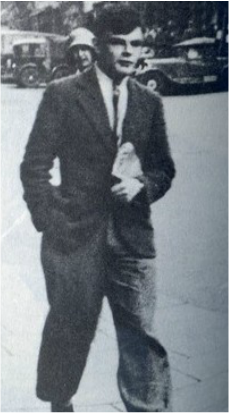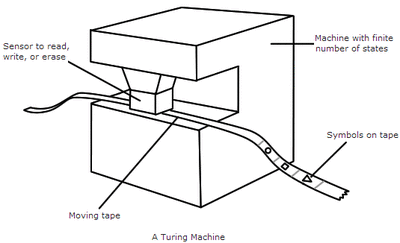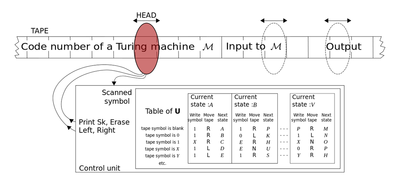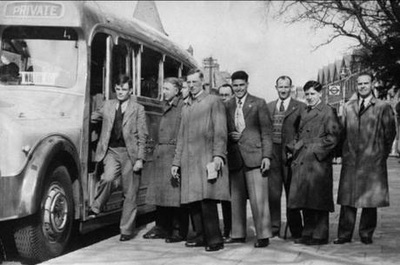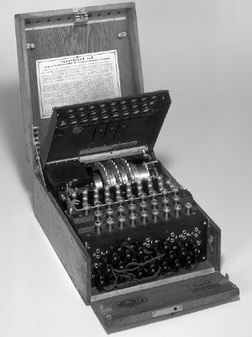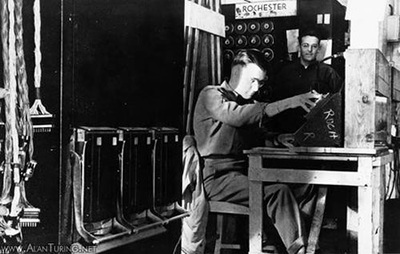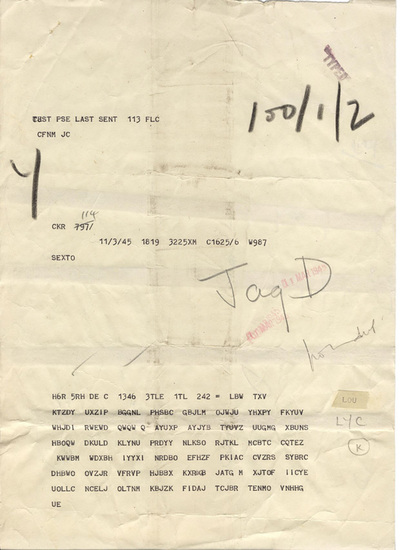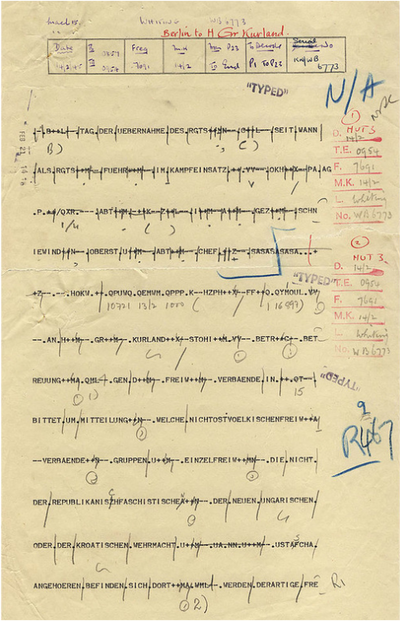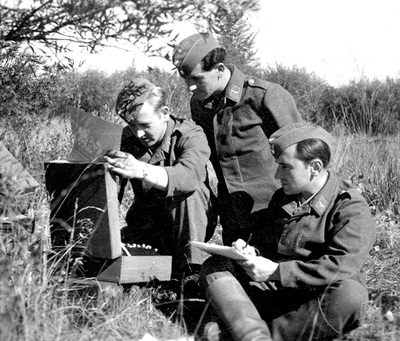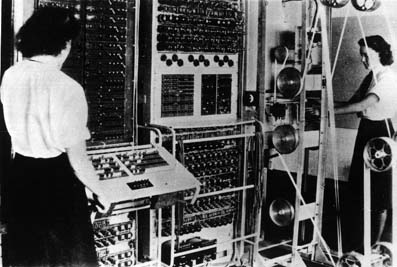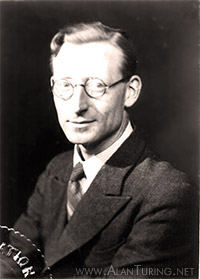Turing’s Background, 1931-42
|
Alan Turing, 1934, Alan Turing: The Enigma
|
At Cambridge University in the 1930s, young mathematics student Alan Turing wrote On Computable Numbers; inspired by Gödel, this paper imagined a “Universal Machine” which operated by scanning symbols on an infinite tape and executing actions accordingly.
“In 1931, Kurt Gödel showed that no axiomatized system rich enough to express arithmetic could be complete: There would always be, within such a system, at least one theorem which was valid but which could not be proved to be valid [...] Turing’s endevour was to seek to settle what question remained in the wake of Gödel's demonstration.” [3]
Though purely conceptual, its inherent simplicity was advantageous: it could emulate any other computer.
“Anything that can not be computed on a Turing Machine can not be computed at all.” [4]
|
The machine left a legacy by establishing computer intelligence as a legitimate prospect--one Turing was interested in pursuing.
“Due to A.M. Turing’s work, a precise and unquestionably adequate definition of the general concept of formal system can now be given.” [5]
“The description that [Turing] gave of a ‘universal’ computing machine was entirely theoretical in purpose, but Turing’s strong interest in all kinds of practical experiment made him even then interested in the possibility of actually constructing a machine on these lines.” [6]
Foreword for A.M. Turing's Original Proposal for the Development of an Electronic Computer, 1972, Turing Digital Archive
|
An ENIGMA Machine, Second World War, n.d., Thinking Machines
|
In 1939, Turing revisited computer science by joining Bletchley Park, a WWII deciphering center tasked with decoding German Enigma machines. There he improved the Polish Bombe, consequently creating the first computer to employ heuristics.
“Full Definition of HEURISTIC: involving or serving as an aid to learning, discovery, or problem-solving by experimental and especially trial-and-error methods.” [7]
Possessing the ability to solve intricate German codes, the Bombe displayed primitive signs of intelligence.
|
How the Bombe operated:
|
“Jean Valentine Explains the Bombe”
|
“Alan Turing”
|
Thomas Flowers’ Colossus, inspired by Turing's concepts, was another decryption machine used.
Though the Bombe and Colossus were both single-purpose, they instilled a passion in Turing to create the first multitasking computer: one that could think for itself.
“[Bletchley Park] played a central part in the structure of Turing’s thinking about broader problems of artificial intelligence.” [8]
“If anywhere has a claim to be the birthplace of AI, it is Bletchley Park. Turing was the first to carry out substantial research in the area.” [9]
